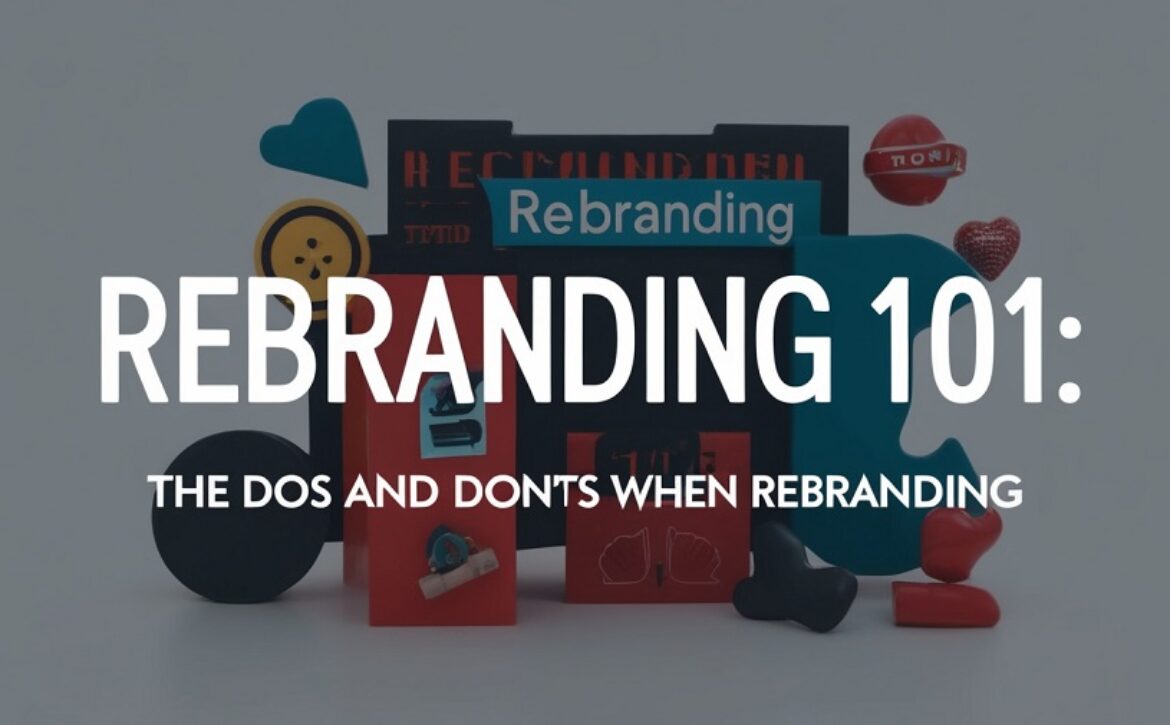Rebranding 101: The Dos And Don’ts When Rebranding
From small startups to the world’s most iconic brands, you’ll find many examples of businesses that have rebranded over the years. Sometimes, it’s needed to bring a brand up to date while other times, it’s used as a vehicle to navigate negative PR. Whatever the end goal, a rebrand can be a great way to start a new chapter as a business. But there have been many examples of failed rebrands, so how do you ensure your rebrand hits the mark? This article will outline the do’s and don’ts when rebranding.
What is a rebrand?
———————————
A rebrand is a strategy used by businesses to reshape the overall look and sometimes name of a brand. The aim is to create a completely new identity for a company, and it is often carried out by a branding agency.
Rebrands aren’t just about the way a business looks. A successful rebrand should change the way people perceive the brand, which is why many businesses take a strategic approach to rebranding.
What is the difference between a rebrand and a brand refresh?
———————————
A brand refresh involves touching up a brand, whereas a rebrand can be thought of more as an overhaul. Whether your brand is in need of a rebrand or a refresh depends on your goals. If your brand has a particularly negative reputation, a rebrand is often the solution.
If a brand needs modernising but has a strong reputation, a brand refresh can ensure that the previous brand isn’t completely lost.
Dos and don’ts when rebranding
———————————
Do
Keep your rebrand goals in mind
As mentioned already, rebranding isn’t just about changing the visual identity of a brand. Each rebrand is different, and each is likely motivated by different goals and objectives. It is imperative that these goals are kept in mind throughout the process.
Each rebrand should begin with a workshop or discovery phase, it’s here where the whole team should be aligned as to the goals of the rebrand. Common goals for a rebrand include successfully targeting a new demographic, explaining the brand’s purpose more clearly and repositioning the brand after a scandal or controversy.
Carry out market research beforehand
Once you have your rebrand goals laid out, it’s important that a market research phase follows. Many brands fall into the trap of feeling like they know and understand their customers inside out. In reality, customers and their wants are everchanging, and it’s important to have the data to back up any decisions.
Market research should clearly outline your audience’s age, interests and where they spend most of their time. From there, you can work out what makes them tick and put together a strategy that ties the story of the brand to the interest of your audience.
Create thorough brand guidelines
The work doesn’t stop once the rebrand is complete, and rolling out your brand to the world is equally as important. To do this successfully, consistency is key. To ensure consistency is achieved, every rebrand should come with brand guidelines that clearly outline how the brand should be used.
This is particularly important to big businesses as the new rebrand will be displayed in a range of locations, including both online and offline. Brand guidelines include guidance on size, colour and typography that ensure the brand appears consistently, even when individuals inside a business come and go.
Don’t
Just follow the trends
When rebranding, it can be tempting to look to trends in the design world and copy what others are doing. As a result, we’re starting to see a lot of similar-looking brands with little creativity and expression. For instance, the minimalist aesthetic that Apple has made so famous has led many smaller brands to try and follow the trend.
Often, following trends leads to a generic-looking identity that fails to capture the uniqueness of the brand in question. To avoid this, start your rebrand by working out what sets your brand apart from competitors and hone in on this through your rebrand. The best brands don’t just look great; they tell a story, and this should be the aim when carrying out a rebrand.
Forget about your audience
The vast majority of decisions you make in business should benefit your customers or consumers in some way – keep this at the forefront of your mind when rebranding. While it can be tempting to focus on individual tastes, the most important thing is to ensure that your new identity appeals to your target audience.
Don’t underestimate the attachment that your audience may have to your existing identity, this is where a lot of rebrands fall short. There are several examples from the sporting world where teams or franchises have taken the brand in a completely new direction, failing to appreciate the deep connection that fans have with a team’s logo or colours.
In cases like this, it could be argued that a refresh is more appropriate than a full brand overhaul.
Underestimate the importance of design
While it’s important that your brand tells us a story and connects with your audience, it doesn’t mean that design is irrelevant. It’s also important to get differing opinions as others may spot mistakes that people inside the business haven’t noticed.
This occurred when American chocolate manufacturer Hershey launched a modernised version of their brand logo. While the aim was to modernise the Hershey’s Kiss symbol, consumers were quick to point out that it actually resembled the poop emoji.
Final Thoughts
There are many rules to follow when carrying out a rebrand, including the dos and don’ts pointed out in this article. However, the most important factor to remember is that no two rebrands are the same, and a successful rebrand for one company looks very different to another.
It’s also important that any rebrand brings through the story of the brand that is being rebranded. This means the goals and objectives of a rebrand should be discussed long before any visual design starts.
If you are unsure about how to approach your rebrand or even if your brand needs one, it may be worthwhile to reach out to a branding or marketing agency in your local area that can point you in the right direction.








